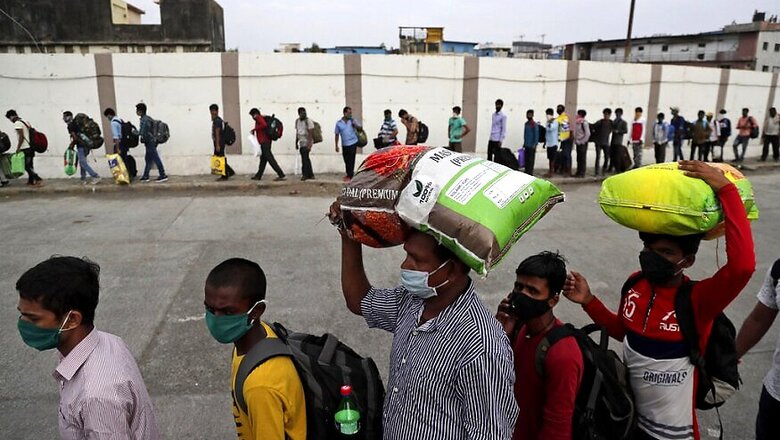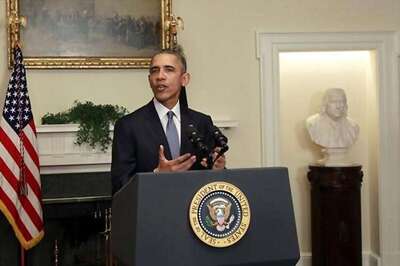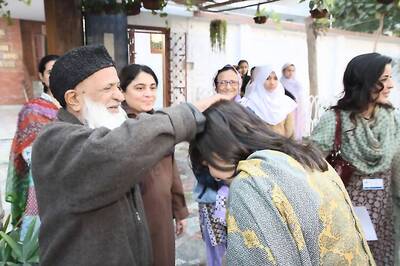
views
Kerala, Punjab and Haryana seem to have crossed the peak in coronavirus cases, says a prominent public health specialist, who expects India to keep COVID-19 deaths at less than 8,000 in the country with strict enforcement of standard protocols and hospitals in high alert.
India should not be seen as one entity when it comes to tackling COVID-19, because the population size across States and districts vary, health systems vary and level of literacy varies across and within States, said Professor G V S Murthy, Director of Indian Institute of Public Health-Hyderabad.
Therefore, it will be more appropriate to talk about State level and district level peaks, he said.
As against total cases per million population which increased in India from 17.6 cases per million on April 25 to 99.9 per million on May 25, in Maharashtra it rose from 61.9/ million in April to 383/ million on May 25, Professor Murthy noted.
In Tamil Nadu it increased from 23.4 per million on April 25 to 199.3 per million on May 25, and in Gujarat from 48.1 per million in April to 219 per million on May 25. Delhi has shown the steepest increase in the country from 140 per million on April 25 to 690 per million on May 25.
"These States (Maharashtra, Tamil Nadu, Gujarat and Delhi) seem to be nearing the peak while those like Kerala, Punjab and Haryana seem to have crossed the peak," Prof. Murthy, told PTI in an interview.
"Since six states (Maharashtra, Tamil Nadu, Gujarat, Delhi, Rajasthan and Madhya Pradesh) contribute 70 per cent cases in the country, unless these States peak, the country peak cannot be reached.
From the present trends, this can happen as early as early June to as late as the middle of July, he said|.
On his assessment about "eventual" COVID-19 deaths in India, Professor Murthy said evidence from some models shows that nearly 80,000-100,000 deaths have been avoided due to the lockdown.
He said data shows that the daily increase in deaths across the country has been two deaths per million population over the last week.
Most governments, Prof. Murthy noted, have ramped up their health systems to prevent deaths by providing appropriate care.
"Efforts have also been made for early identification of severe respiratory illness and influenza like illness. These are positive indicators that the country will be able to keep mortality on the lower side."
"If standard protocols are meticulously followed and hospital facilities remain on high alert, direct COVID-19 deaths should be kept to less than 7,500-8,000 in the present pandemic. That would translate to four to five deaths per million population," he said.
On India moving to 10th place in the world in terms of the number of cases, he said this statistic is misleading as the countrys population is much higher than most of the nations in Europe put together.
"Therefore, one must use a comparable population denominator like cases or deaths per million population (called case rate or death rate). When we do this, the total case rate per million population in India is 101 compared to 6,050 in Spain, 5098 in the US, 3825 in the UK and 3,801 in Italy," Professor Murthy pointed out.
Similarly, death rate per million population in India is three per million compared to 615 in Spain, 542 each in the UK and Italy, 435 in France and 300 in the US, he said, adding, most countries in South and South East Asia have similar rates as India.
Asked if he thought the COVID-19-induced lockdown should be completely lifted from June 1, Murthy said once steps have been taken to lift it in whatever measure, the same direction should be followed by easing it in a staggered manner.
Clusters of cases have to be identified on a daily basis and containment measures have to be in place for such clusters. This has to be a dynamic process and reviewed based on new cases occurring in a large number.
"Public gatherings should not be permitted for the next couple of months. This includes cinema houses, religious or social events. If such activities have to be opened up, sophisticated sanitisation measures like ultra violet disinfection tunnels should be set up and all people should pass through the same," he said.
Public transport will need to be made available, he said, adding, measures like short distance buses rather than long distance ones will reduce the duration of contact and may be preferred. "Metros can be made operational with adequate sanitation procedures."




















Comments
0 comment